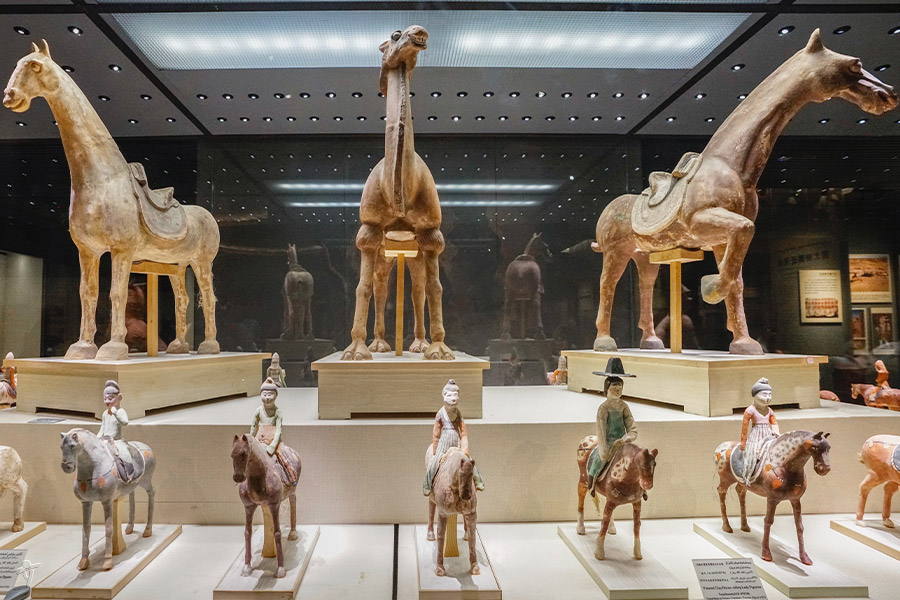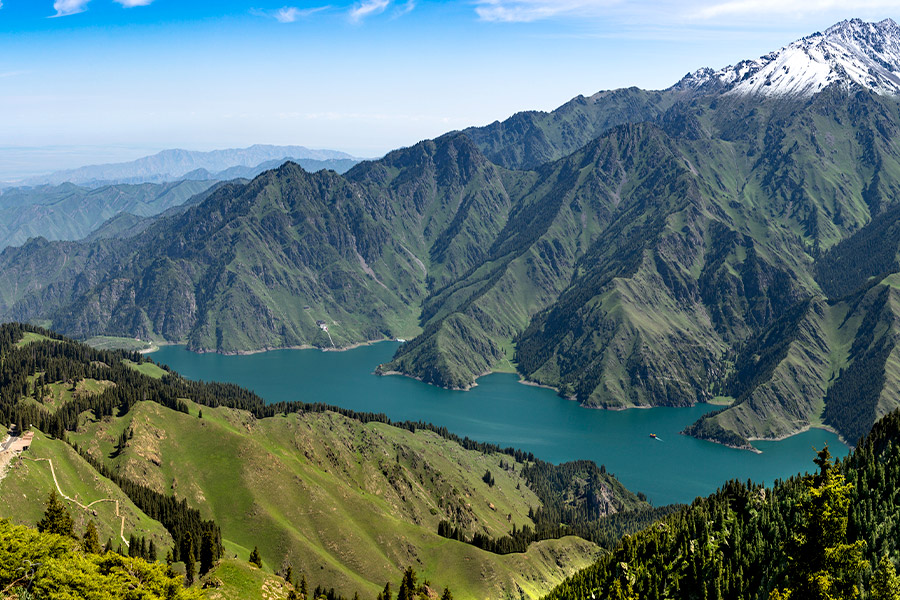Xinjiang Uygur Autonomous Region Museum

Chinese name: 新疆维吾尔自治区博物馆
Location: No.132 Xibei Road, Urumqi, northeast China’s Xinjiang Uygur Autonomous Region
Opening time:
-summer (April 15 - October 15): 09:30 - 19:00; 10:00 - 18:00 on holidays.
-winter (October 16 - April 14 next year): 10:30-18:00; closure on holidays.
Ticket: free
How to get Xinjiang Uygur Autonomous Region Museum:
- Take bus No.2 or 52 at railway station and debus at "Youhao Station" and walk through Youhao Square.
- Take bus No.51 from the airport.
- Take bus No.7, 66, 906, 910, 912.
Best time to visit: spring and fall
Brief introduction to Xinjiang Uygur Autonomous Region Museum
Xinjiang Uygur Autonomous Region Museum located on Xibei Road in Urumqi City, is the collecting and research center of relics of Xinjiang Uygur Autonomous Region. It is the only provincial comprehensive museum in the region. It was officially opened in 1959 and reconstructed in 2005 with a total area of 17,228 square meters. The green-domed museum demonstrates a traditional Uygur architectural style. The interior is decorated with strong local feature. The exhibition hall houses more than 40,000 precious cultural relics and specimens, national relics, revolution relics. Most noted items include Loulan Beauty and a brocade arm-band woven made some 1000 year ago indicating "the appearance of five starts in East benefits China". The museum’s permanent exhibitions respectively represent ethnic customs, history and culture of Xinjiang, and ancient mummies of Xinjiang. Xinjiang Uygur Autonomous Region Museum has also held several themed exhibitions such as "China in primitive society", "silk manufacturing of China", "the revolutionary history of Xinjiang", "grottoes and murals of Xinjiang", etc. Since 1986, Xinjiang Uygur Autonomous Region Museum has staged exhibitions in Macau, Hong Kong and Japan. Walking into the museum, visitors can have a better command of Xinjiang Uygur Autonomous Region.

What to see in Xinjiang Uygur Autonomous Region Museum?
-Retrieve the lost glory of west regions: exhibition of historical relics of Xinjiang
This section covers an area of 1500 square meters and displays the history of Xinjiang and unearthed cultural relics. More than one thousand valuable relics excavated and collected on Silk Road., including brocade, ceramics, clay figures, coins, tablets, documents, weapons, utensils, etc, which provide valuable insight to the region’s history and culture.
- Eternal slumber astonishes the world: exhibition of millennium-old mummies
This section covers an area of 700 square meters and systematically introduces ancient dwellers of Xinjiang. Corpse exhibition hall showcases the famous Loulan Beauty, a 3800-year-old female mummy, a 3200-year-old Hami male mummy, and a 3000-year-old Qiemo baby mummy. Those mummies helps to the study of anthropology, ethnology, history, archaeology and even medical science.
- Monument of history: exhibition of revolutionary history of Xinjiang
This section covers an area of 700 square meters. Over 200 revolutionary relics and more than 200 pictures are on display, providing insight to the history of Chinese Communist Party fighting for the construction of the region in different periods.
- Exhibition of Xinjiang minority customs
The section occupies an area of 1500 square meters. More than one thousand relics, wax statues, reproduced scenes of minority people’s daily life are showcased to unfold the dressing and adornments, daily life, festivals, entertainment, wedding and funeral, etiquette, diet, religion and other aspects of 12 brotherly ethnic minorities lived in Xinjiang, including Uygur, Kazakhstan, Muslim, Kyrgyz, Mongolia nationality, Xibe, Tadzhikistan, Uzbek, Daur, Manchu, Tartar, Russia.
Urumqi tours
Quick Questions
Our team is waiting for your questions. Please feel free to ask us any questions you might have about our China package tours, Chinese culture, or the sites available. We will gladly help you with any special needs you might have and all questions, like our trip designing is completely free of charge.








